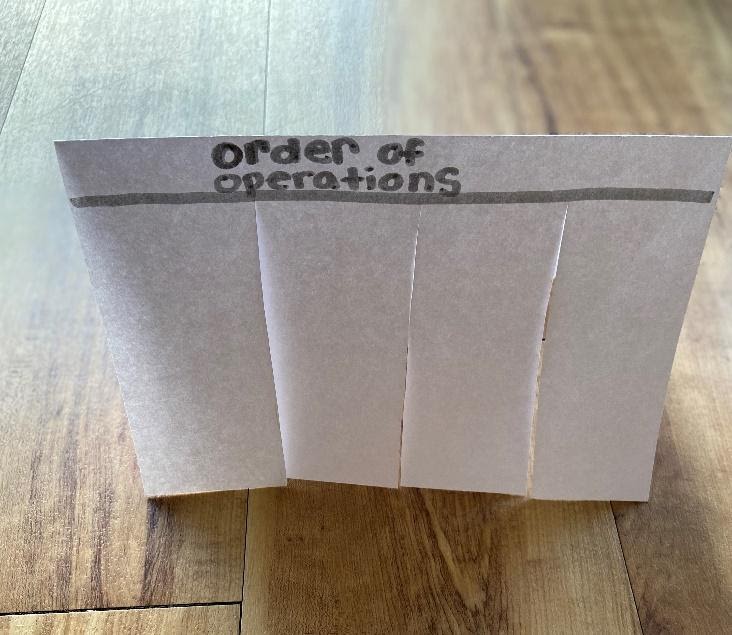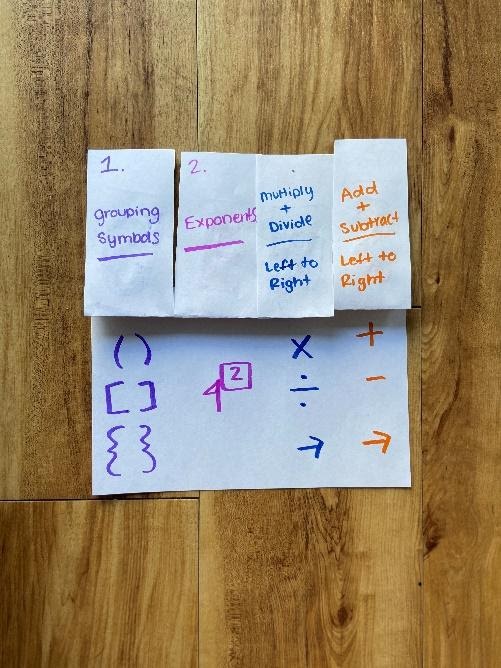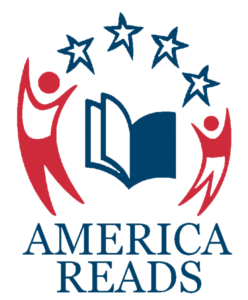
Hi, my name is Erica!
I am in my Junior year at Arizona State University. I am studying Elementary Education and cannot wait to be a teacher with my own classroom. I enjoy working with America Reads Tutors because I can help students find that learning can be fun!
After completing this activity students will be able to say, “I have the tools to solve math problems that contain groupings and I know the order of operations.”
This will meet the Arizona Common Core standard (4.W.2), by teaching students to use Groupings (parentheses, brackets, or braces) in numerical expressions, and solve expressions with these symbols with the help of a GEMS Foldable to understand the correct order of operations.
What you will need:
● Provided template
● Piece of cardboard
● Clear tape
● Glue
● Scissors
● String/yarn ● Pencil

- White paper
- Pencil
- Crayons, markers, and colored pencils
- Scissors
Directions:
- The first step is to understand what the order of operations are. We will be using an acronym called GEMS:


To help you remember this order, we are going to create a foldable that can be used as a reference for you when solving these problems.
2. First, fold a piece of paper in half hamburger style.

3. With the paper horizontally, write Order of Operations on the top.

4. We will be making cuts on the top half of the fold that you just wrote “order of operations” on. You should only be cutting through one half of the paper, not both. Cut the paper into 4 sections without going to the top. Stop before you get to the writing at the top.

5. Write one letter of G E M S on each of the four sections.

6. Use this picture to complete the next few steps.
7. Lift the G section up and write 1. grouping symbols on the other side. On the bottom section write (), [], {}. So that you know what grouping symbols look like.
8. Now lift the E section and write 2. Exponents on the other side. On the bottom section write an example of an exponent such as 4^2.
9. Now lift the M section and write 3. Multiply and Divide on the other side. On the bottom section write x, divide, and an arrow pointing to the right. This is to remind you that you multiply from left to right.
10. Now lift the S section and write 4. Subtract and Add on the other side. On the bottom section write – and + and then an arrow pointing to the right. This is to remind you that you subtract and add from left to right.


11. Now that you have created a “GEMS foldable” we can put it to use and solve some problems. (Problems below are adapted from KAHN Academy: Evaluate expressions with parentheses (practice) | Khan Academy)
12. We can use our foldable to solve this problem: 2 x (4+6-1)
We need to use our acronym: GEMS
Tip: Color coding is a great math strategy. See how I coded the gems above and use it to explain the solution below!
G: Do we have any groupings?
Yes, (4+6-1): we will solve what is inside the () first.
Since we have:
- no groupings inside the parentheses ()
- no exponents inside the parentheses ()
- no Multiplication or division inside the parentheses ()
- we just need to add and subtract from left to right what is inside the parenthesis.
2x(4+6-1)
4+6=10
10-1=9
Now that we know that what is inside the parenthesis () = 9: We have 2 x 9=? All that is left is multiplication. 2 x 9=18
13. Let us try one more. This time try and solve on your own before looking at the solution.
Use GEMS to solve!
If you forget what the letters mean, use your foldable!
30 ÷ (10+8-3)
See the solution below.
First, we need to solve our grouping: 10+8-3.
10+8=18
18-3=15
Now we have 30 ÷ 15. We have no groupings and no exponents, so we divide!
30÷15=2
The student will be able to use their foldable to remember the order of operations and how to solve expressions that contain parenthesis. The foldable will help students to access which part of the expression to solve first using GEMS. GEMS can be easier for some students to understand compared to the popular PEMDAS because it allows for all groupings to be remembered instead of just parenthesis. It also groups multiplication with division, and subtraction with addition since they are done on the same level of order, whichever comes first left to right.
Thank you for visiting our blog! If you liked this activity and would like to see more, please visit our website and our Pinterest! See you next time!
